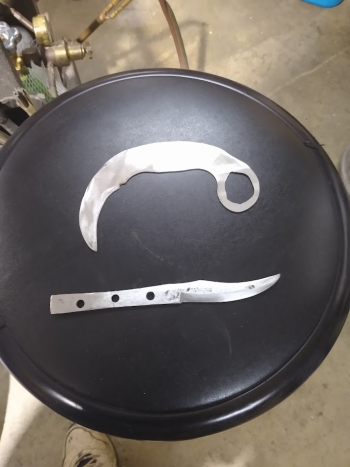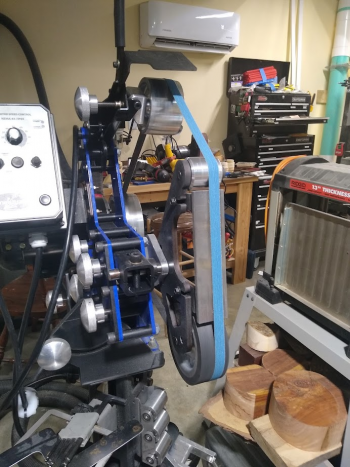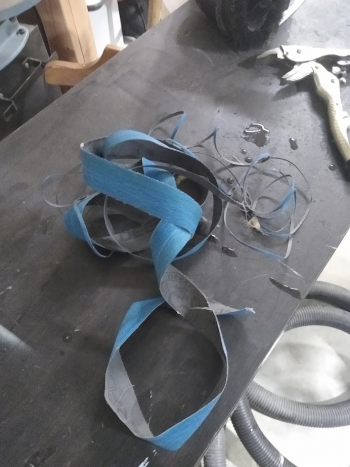Sharing post from instagram
I am not sure how to share things well here but the link above should get my text and all 7 photos. I can go copy and paste the text but can't share photos from my phone(the forum always complains they are too big), I have to do that from my desktop computer. If there is a better way to do this please let me know.
If there is a better way to do this please let me know.
So tonight I made a one brick forge. I didn't have any blade steel around but I still wanted to test it out. This was a left over piece of cold rolled steel, I assume 1018 or similar. So I know it won't be able to be hardened. But that was not my goal.
I was able to get the metal hot enough to glow red and move it with a hammer on my vise and my chunk of rr-rail. I also learned that I still need a bunch of work on my tongs.
I never considered what it would take to bevel a recurve blade. The belt grinder was just too much to get used to so I moved to a hand file in the vise to try and straighten out (or curve as it were) the bevel.
I am not sure that I won't learn all the same lessons as I would using blade steel since I have to do the same things, except for HT and temper. I think I will finish it anyway. It fits my small hands nicely so I am not going to go crazy with a hidden tang. And when I hold it my thumb just naturally goes to the back of the blade, so it is begging for some jimping.
Not sure what it will be good for when it is done, perhaps a letter opener or simply a paper weight.
Anyone want to offer techniques for beveling on a recurve. I have been getting reasonable results with a small flat file, but I think it will require perhaps a half round. But the real question is how to bevel it on the belt grinder...
#onebrickforge #recurve #knifemaking #knifemaker #bladesmith #maker #diy
I am not sure how to share things well here but the link above should get my text and all 7 photos. I can go copy and paste the text but can't share photos from my phone(the forum always complains they are too big), I have to do that from my desktop computer.
So tonight I made a one brick forge. I didn't have any blade steel around but I still wanted to test it out. This was a left over piece of cold rolled steel, I assume 1018 or similar. So I know it won't be able to be hardened. But that was not my goal.
I was able to get the metal hot enough to glow red and move it with a hammer on my vise and my chunk of rr-rail. I also learned that I still need a bunch of work on my tongs.
I never considered what it would take to bevel a recurve blade. The belt grinder was just too much to get used to so I moved to a hand file in the vise to try and straighten out (or curve as it were) the bevel.
I am not sure that I won't learn all the same lessons as I would using blade steel since I have to do the same things, except for HT and temper. I think I will finish it anyway. It fits my small hands nicely so I am not going to go crazy with a hidden tang. And when I hold it my thumb just naturally goes to the back of the blade, so it is begging for some jimping.
Not sure what it will be good for when it is done, perhaps a letter opener or simply a paper weight.
Anyone want to offer techniques for beveling on a recurve. I have been getting reasonable results with a small flat file, but I think it will require perhaps a half round. But the real question is how to bevel it on the belt grinder...
#onebrickforge #recurve #knifemaking #knifemaker #bladesmith #maker #diy















